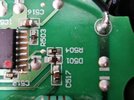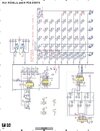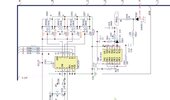Mobieus_uk
- Jun 3, 2023
- 7
- Joined
- Jun 3, 2023
- Messages
- 7
hello all, first time post, trying to fix my sons mixing deck, pulled it apart replaced some led's last year but theres another fault with the circuit that detects when you touch the jogger wheel, theres clearly some damage to some of the componets
the damage seesm to be around C517 and D501, R504 is a resister and reading as expected 20k, this is the right hand board so compared everything against the left hand board, found the capacitor to be much slower and D501 seems to be dead, took a picture of the good side as well
not all of the part numbers apprear in the service manual so does anyone have any idea about the diode and the capacitor, the schematics gives a little more information but im not a electronics engineer so it really means nothing to me so any help on d501 and c517 would be greatly appreciated - seems to be a common fuaut but no information on suitable replacment components - even if it turns out to be the IC thats the easiest bit to identify replace its just the other 2 bits im struggling with, hope ive given enough info for someone that you understands these circuits
the damage seesm to be around C517 and D501, R504 is a resister and reading as expected 20k, this is the right hand board so compared everything against the left hand board, found the capacitor to be much slower and D501 seems to be dead, took a picture of the good side as well
not all of the part numbers apprear in the service manual so does anyone have any idea about the diode and the capacitor, the schematics gives a little more information but im not a electronics engineer so it really means nothing to me so any help on d501 and c517 would be greatly appreciated - seems to be a common fuaut but no information on suitable replacment components - even if it turns out to be the IC thats the easiest bit to identify replace its just the other 2 bits im struggling with, hope ive given enough info for someone that you understands these circuits
Attachments
Last edited:







